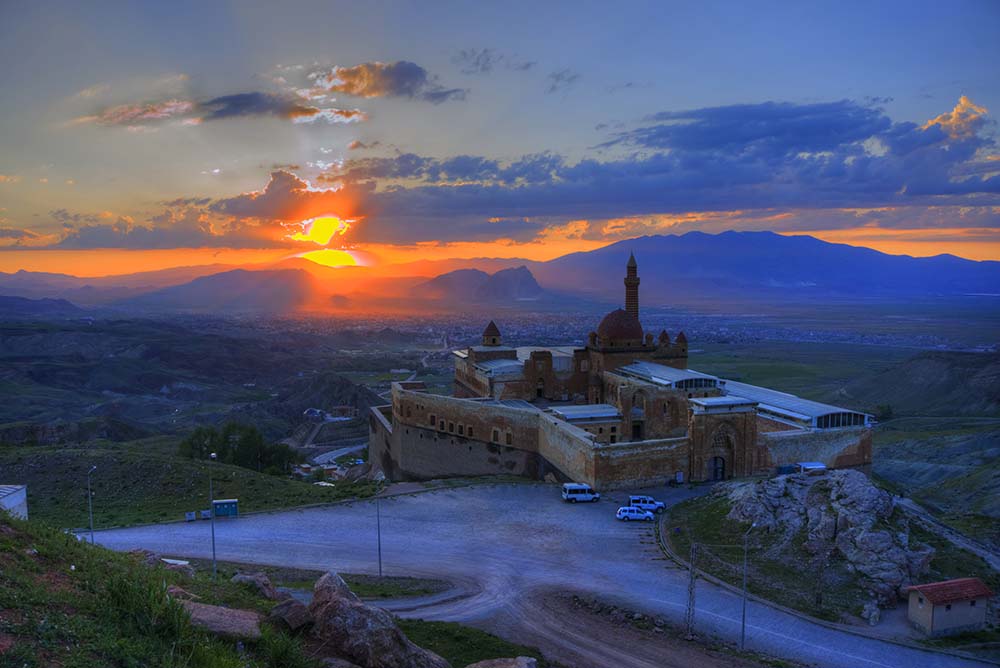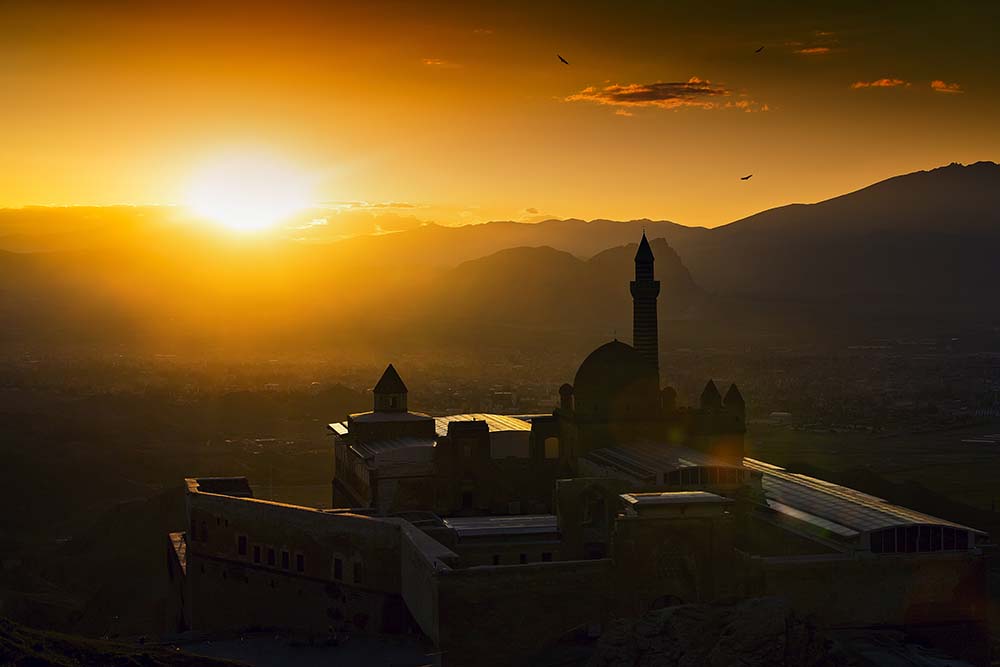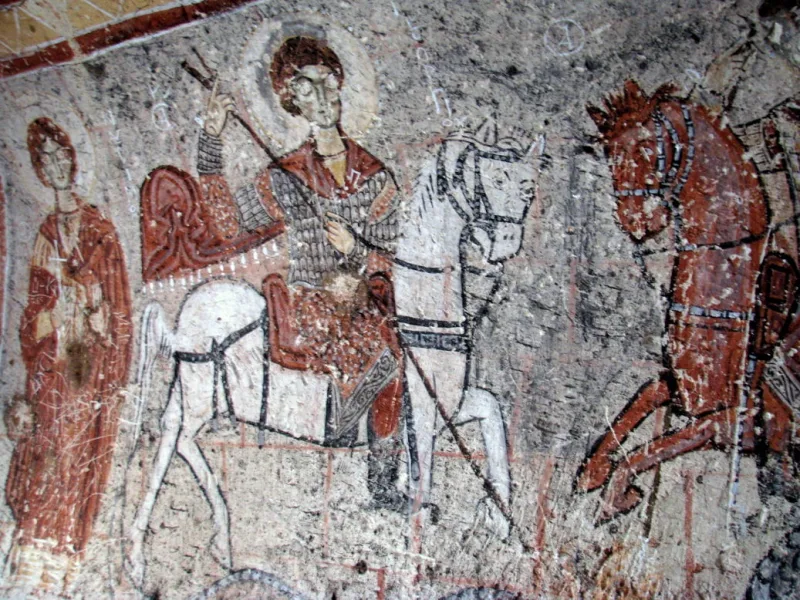Ağrı province is located in the easternmost part of Turkey. It took the name of one of the highest mountains, the Ağrı Mountain. When people migrated from Central Asia, Ağrı was a transitional city and so it has hosted many civilizations over time. However, the city is not the center of a long-lasting civilization due to its transitional nature. Urartians were the ones who stayed the longest time. Hamur, Tutak, Eleşkirt, Patnos, Diyadin, Taşlıçay, and Doğubeyazıt are counties of Ağrı that reflect its rich tradition.
Local Cuisine
Ağrı cuisine is best introduced by Abdigör meatballs, and there are other delicious local dishes too. Foods like Selekeli, trout, white honey, haşıl, hengel, noodle, kuymak, kete (danish style filled flaky pastry), pişi, ayran aşı, meatball, halise and murtağa are among other main Ağrı flavors.

Ağrı province is located in the easternmost part of Turkey.
Places to Visit
If you visit Ağrı, you should also see handcrafted carpets and rugs. Wool-based weaving is well developed here because winter is generally hard. Consider, too, pillows, saddlebags, sweaters, angora gloves, and socks, all of which are produced here as well. Natural straw-made goods, and felt are also among handcrafts produced in this region.
This spectacular city has much cultural and natural value and it is one of the most important tourist centers of the Eastern Anatolia Region. It has the second largest meteor pit in the world, which excites people interested in mountaineering. When you visit the Avril Castle, you travel in time old historical times. There are also many historical and natural wonders in Ağrı:

Ishak Pasha Palace
- İshak Paşa Castle
- Ahmet Han Shrine
- Beyazit Old Mosque
- Meya Caves: People generally visit here first. There is a temple, a shelter, and a room in the cave.
- The Garden of Monk: It is thought that famous love story’s Kerem fell in love with the Monk’s daughter Aslı here.
- Ağrı Meteor Pit: This is the second largest meteor pit. A meteor fell into this spot and created a great pit in 1892. In time, the pit has been reducing its size. It was 60 meters but now is only 35 meters deep.
- The Ağrı Mountain: This is the highest mountain of Turkey and it has volcanic features. Mountain climbers like Mt. Ağrı, and in every season it has snow. One the most beautiful mountains of our region and it has a ski resort.
How to Get There
Thanks to the airport located in the city, you can make a daily trip here by plane. It also possible to make a safe and comfortable journey by highway.



